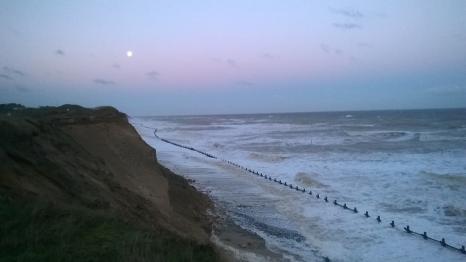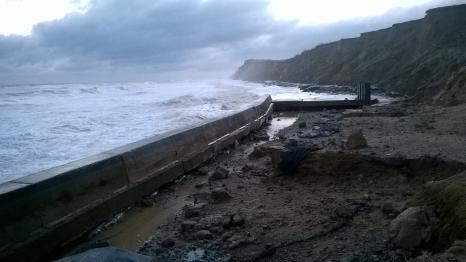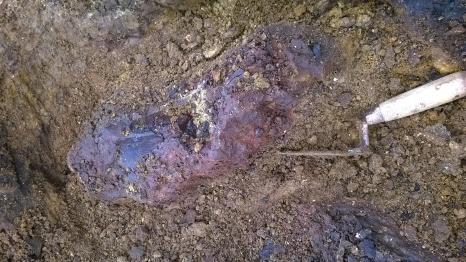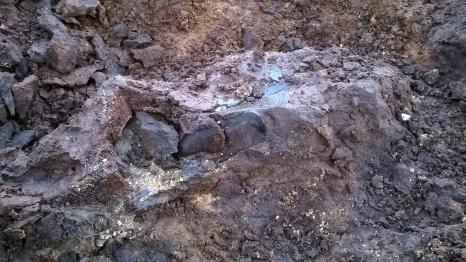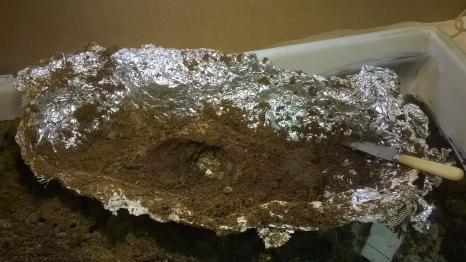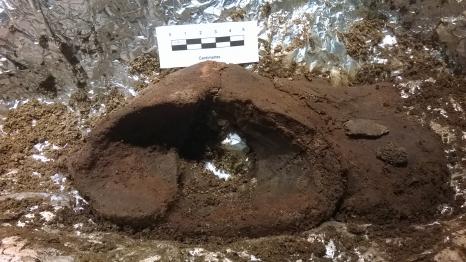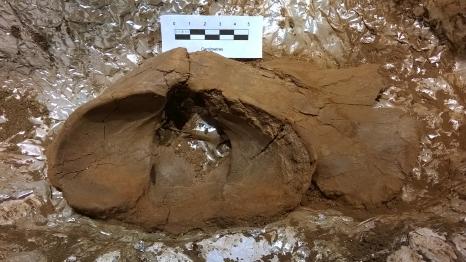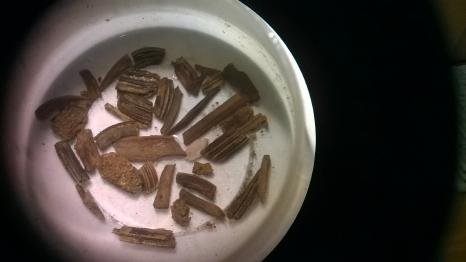Field Guide to the Deep History Coast
Recovering rhino atlas remains from the West Runton Freshwater Bed
After the storm surge of 13-14 January 2017 many collectors descended on the West Runton Freshwater Bed (WRFB). Jon Stewart and I were also there and one bone in particular was pointed out to me by collector Dan Chamberlain. Preliminary investigation suggested that it might be part of a skull but whatever it was it was delicate. So I decided to recover it using a time honoured plaster jacketing technique to ensure the bone remained supported and encapsulated so it couldn't fall apart.
Click on the images below to see full sized images. Use your back button to return to this page.
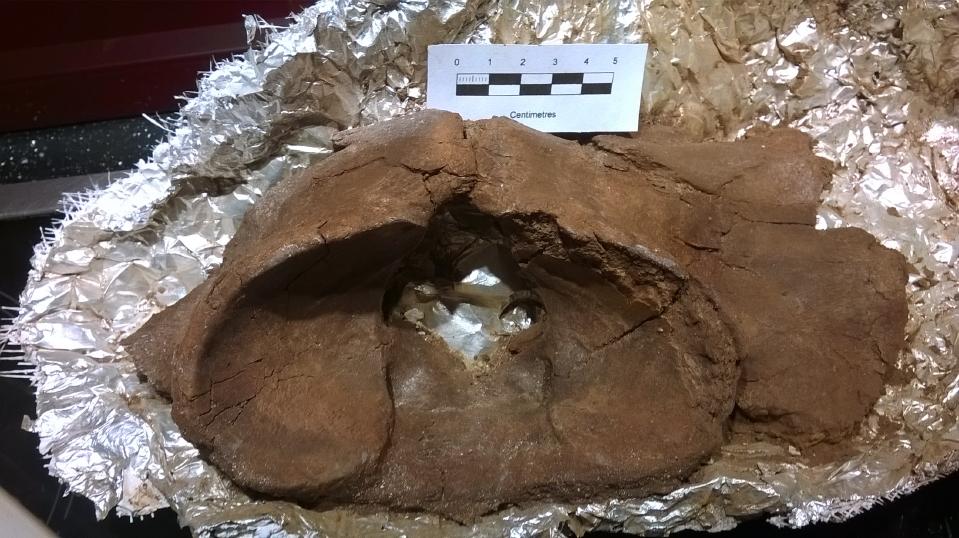 The friable surface is consolidated and little more needs to be done except scientific investigation. |
What type of rhino is this?
Scientific investigators and amateur collectors have been visiting the West Runton Freshwater Bed since the 19th century. A number of remains of rhinos have been discovered from the bed over the years. Some are in the collections of the Norfolk Museums Service (Cromer Museum; Norwich Castle Museum and Art Gallery). This would once have been called the 'Etruscan rhinoceros' Rhinoceros etruscus but that name is now applied to the ancestor of this species. Our specimen is still awaiting preparation that will reveal its true identity but it is likely to belong to the descendent species of the Etruscan rhino called Stephanorhinus hundsheimensis, whose type specimen came from Hundsheim, not too far from the River Danube, east of Vienna, in Austria (in this photo, courtesy of Professor Tony Stuart, the front part of the skull is missing). They ranged across Europe and were adapted more for browsing rather than for grazing.
Mounted skeleton of Stephanorhinus hundsheimensis.
Reporting finds
Please report all finds from the Cromer Forest-bed to the Norfolk Museums Service, who are maintaining a database of fossils finds in order to better understand the nature of this remarkable coastline.
Visit this website to discover more
A partial rhino skull
Rhinoceros finds are not uncommon. Two years before this find, on 26 January 2015 another storm surge caused erosion of the WRFB and more fossil remains were discovered by amateur collectors. I was able to collect a partial rhino skull that is underdevelopment at Norfolk Museums Service' Castle Museum Study Centre. Here are the pictures and description of that find.
